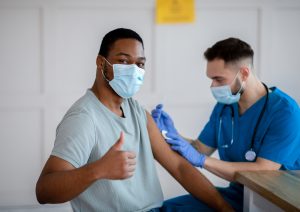With more and more Americans becoming eligible to receive their COVID-19 vaccine, questions about what type of vaccines are being administered and how they work are very common. Flushing Hospital Medical Center, with the help of the Centers for Disease Control and Prevention (CDC)would like provide our community with the facts about Messenger RNA (or mRNA) vaccines.
According to the CDC, mRNA vaccines are a new type of vaccine to protect against infectious diseases. To trigger an immune response, many vaccines put a weakened or inactivated germ into our bodies. Not mRNA vaccines. Instead, they teach our cells how to make a protein—or even just a piece of a protein—that triggers an immune response inside our bodies. That immune response, which produces antibodies, is what protects us from getting infected if the real virus enters our bodies.
It is important to note the following facts about the mRNA vaccines
- They do not use the live virus that causes COVID-19
- They cannot give someone COVID-19
- They do not interact with our DNA in any way
- mRNA never enters the nucleus of the cell, which is where our DNA is kept
- The cell breaks down and gets rid of the mRNA soon after it is finished using the instructions.
mRNA vaccines are new, but they are not unknown. Researchers have been studying and working with mRNA vaccines for decades. Interest has grown in these vaccines because they can be developed in a laboratory using readily available materials. This means the process can be standardized and scaled up, making vaccine development faster than traditional methods of making vaccines. Even though they are new, mRNA vaccines are held to the same rigorous safety standards by the U.S. Food and Drug Administration (FDA).
Future mRNA vaccine technology may allow for one vaccine to provide protection for multiple diseases, thus decreasing the number of shots needed for protection against common vaccine-preventable diseases. Beyond vaccines, cancer research has used mRNA to trigger the immune system to target specific cancer cells.
All content of this newsletter is intended for general information purposes only and is not intended or implied to be a substitute for professional medical advice, diagnosis or treatment. Please consult a medical professional before adopting any of the suggestions on this page. You must never disregard professional medical advice or delay seeking medical treatment based upon any content of this newsletter. PROMPTLY CONSULT YOUR PHYSICIAN OR CALL 911 IF YOU BELIEVE YOU HAVE A MEDICAL EMERGENCY.

